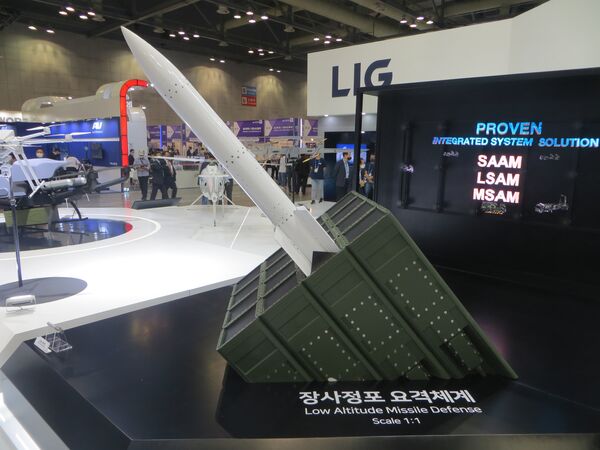
LIG Nex1 displayed a mock-up of its LAMD system at the DX Korea defence show in 2022. The missile is 165 mm in diameter and will intercept targets at a maximum firing range of 7 km and at an altitude of 5 km. (Janes/Jon Grevatt)
South Korea's Defense Acquisition Program Administration (DAPA) has accelerated the exploration and development of the low-altitude missile defence (LAMD) system – also known as the long-range artillery interception system – by a year, the agency said in a press release on 1 January.
According to DAPA, the system's exploration and development – originally scheduled for 2025 – has been accelerated to 2024 to counter North Korean long-range artillery.
South Korea's local military technology firm LIG Nex1 began developing the LAMD system in collaboration with the Agency for Defense Development (ADD) – a DAPA subsidiary – in early 2022.
DAPA said that the LAMD exploration and development was initially planned for three years beginning in 2022.
However, to complete the LAMD's exploration and development in 2024 – one year earlier than planned – the system's core technological development was finished in June 2023, DAPA added.
Further development and production will be carried out from 2025 to 2028, DAPA said.
According to the agency, a battery of the LAMD consists of a radar, an engagement control centre, a launcher, and an interceptor missile.
The system, test-fired for the first time in March 2022, is based on the Haegung Korean Surface-to-Air Anti-Missile (K-SAAM) system.
Janes earlier reported that the LAMD missile will be fitted with an active radar seeker for terminal guidance. The missile will be 165 mm in diameter and is envisaged to intercept targets up to 7 km away and at an altitude of 5 km.
Looking to read the full article?
Gain unlimited access to Janes news and more...







